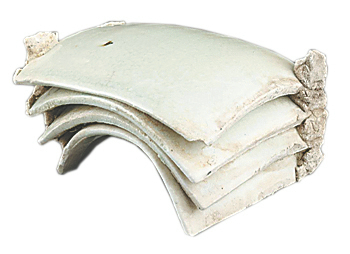

Qin also explains that most refined Chinese porcelain varieties were produced in southern China because, in the north, the porcelain clay has less silicon. That means it would be more difficult to sinter and form a perfect porcelain shape.
But how did Western Xia artisans in Suyukou make such outstandingly exquisite products?
Their secret formula was to deliberately add quartz to the clay, as shown by the mining sites around Suyukou. The end result was clay of supreme quality, equal to that of Jingdezhen.
"It's quite shocking for us to find such a technical breakthrough by the Tangut people," Qin says.
Zhu Yanshi, deputy director of the Institute of Archaeology with the Chinese Academy of Social Sciences, considered Suyukou an ideal example of great luck.
"You rarely find such a complete chain of porcelain production that can help solve so many academic puzzles, let alone one that represents the cutting-edge technology of its time," he says. "New light could be shed on studies of Western Xia history as a whole."
Hu Dongmei in Yinchuan contributed to this story.
Contact the writer at wangkaihao@chinadaily.com.cn